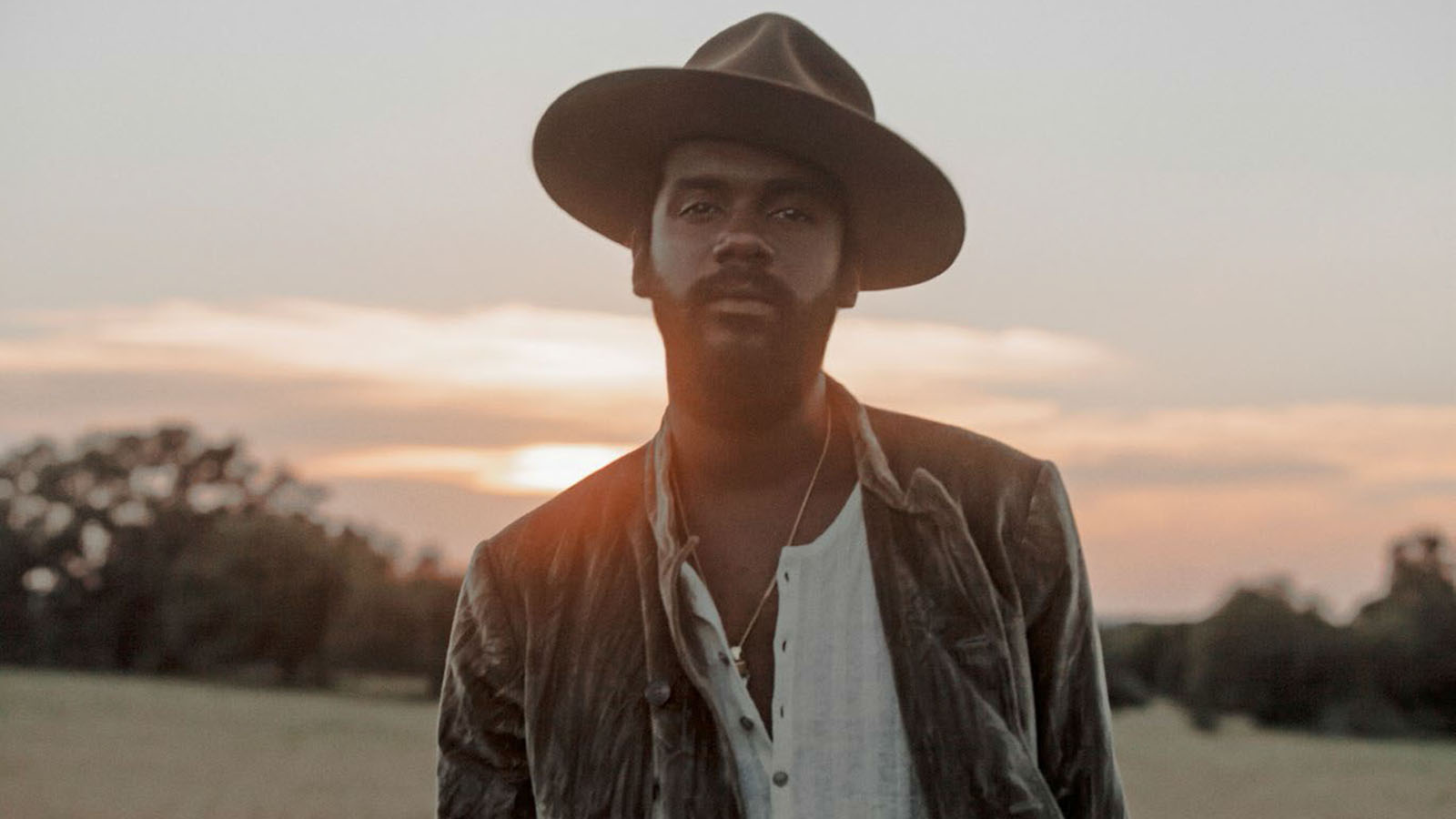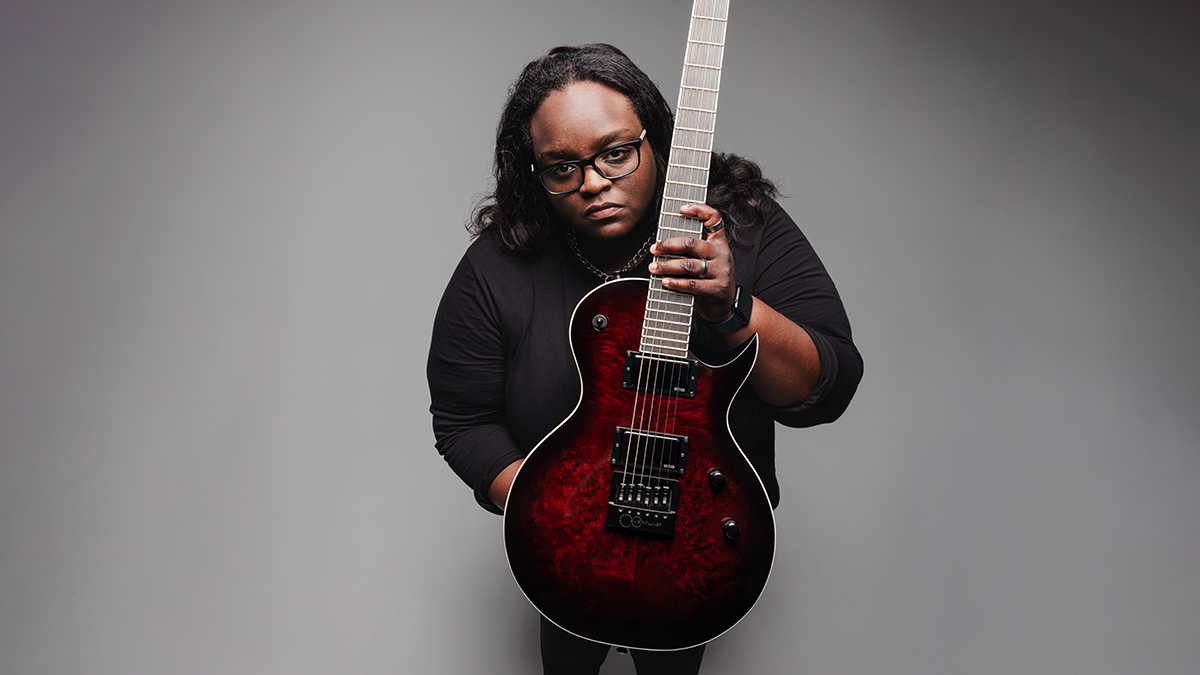
Like most overnight success stories, Gary Clark Jr. is anything but an overnight success. Born and bred in Austin, Texas, he performed for years in relative obscurity before local kingmaker Clifford Antone gave him a regular slot at the famed blues venue that bears his surname. A couple of self-financed and indie releases spread Clark’s name to the blues cognoscenti, but that big break into the mainstream proved elusive. And then in 2010, two seismic events swept the 26-year-old picker into the national spotlight: Eric Clapton asked him to perform at his Crossroads Guitar Festival at Madison Square Garden, and Warner Bros. signed him to a multi-album deal.
All at once, the hype machine cranked into overdrive. Even before the release of Clark’s major-label debut, The Bright Lights EP, critics churned out huzzahs and encomiums heralding the arrival of a new blues superstar, comparing the young guitarist to Clapton, Jimi Hendrix and Stevie Ray Vaughan. The hoopla could have overwhelmed him, but the laid-back Clark had other things on his mind — like per diems.
“Nobody told me about that before — it’s like you get a daily allowance to go out on tour,” he says. “I would pull up to do a show and get some hot food. To me, that was amazing. I just didn’t concern myself with all the industry noise. There was nothing I could do about it, so why get upset? People were going to say whatever they wanted, no matter what I did.” He pauses, then adds, “To be honest, I was just happy that anybody was paying attention.”
Clark kept his head down and did the work, issuing two finely crafted albums (2012’s Blak and Blu and 2015’s The Story of Sonny Boy Slim) that neatly mixed elements of traditional blues and R&B with splashes of rock, hip-hop and funk. Although both records featured boatloads of tasteful — and at times, uproarious — six-string work, Clark’s soloing never dominated his songs, and some early boosters wondered if the guitarist was veering too far from the blues path. “I think some people would have been happy if I just wrote a bunch of jams and blazed,” he says. “That wasn’t where I was at. I got a chance to be creative, and with that came great responsibility.”

The guitarist’s new album, This Land, isn’t only his best effort yet, but it’s one on which he gathers all of his diverse stylistic influences and arrives at a gloriously sustained single vision in a way that feels epic. Guitar hero-wise, Clark comes out full bore on the explosive title track, an in-your-face indictment of Trump-era race relations, with blowtorch soloing that matches the song’s blistering lyrical sentiments. On the hallucinogenic funk stomper “I Walk Alone,” he creates a colossal wall of sound from competing guitar treatments — one is all fuzzed-out power chords, the other a bell-like glaze of tremolo-bathed lines — that serve as a disquieting counterpoint to his blissed-out falsetto. “Gotta Get into Something” is a rough-and-rowdy punk rave-up that sees him emulating Chuck Berry with some wildcat double-stop licks. And while giving thanks to his mother on the unabashedly sentimental “Pearl Cadillac,” he uncorks an extended solo that is by turns swooningly beautiful and almost achingly sad.
More than his previous releases, much of This Land is bathed in the sounds and textures of Seventies soul music, and for Clark, who coproduced the album with Austin friend Jacob Sciba and worked with a tight-knit group of players (drummers J.J. Johnson and Brannen Temple, percussionist Sheila E, bassist Mike Elizondo and keyboardist Jon Deas), the overarching goal was to create a sort of connective tissue between the records he grew up on and the production techniques of today.
“If you were to tell me, ‘This record sounds like it could have been made 45 years ago,’ I’d consider that a huge compliment,” Clark says. “As a music fan, I try to gather everything I’ve heard and reinterpret it in a way that tells a new story. So yeah, I’m hearing Marvin Gaye and Curtis Mayfield, but I’m sitting with Jacob Sciba and we’re listening to Bruno Mars and Adele. We have conversations about how we can combine the eras and put it all together in a way that sounds fresh.” He lets out a chuckle and adds, “Sometimes it feels like you’re standing on a cliff, like, ‘I don’t know… Should we try this?’ But that’s the creative risk you’ve got to take, and the result is always worth it.”
All the latest guitar news, interviews, lessons, reviews, deals and more, direct to your inbox!
The blues are a big part of your roots, but you’re no purist. A lot of folks in Austin would probably have preferred you to stay in the blues lane.
Like you said, the blues are where I came from, but that doesn’t define me. I listen to all kinds of stuff, but I’m not just one thing. For instance, I hit a point when I was maybe 22 — I had dreadlocks, I was listening to Bob Marley, and I walked around barefoot. And I was like, “You know what? As much as I love this music, I love other music, too.” I feel the same way about blues: I’m a blues guy, but I’m an everything guy. Soul, rock, reggae — it’s all in me. You know what I mean? I don’t want to become a caricature to anybody. I’m a human being.
What about how the blues relates to soul? On this album, I hear a direct line that connects Muddy Waters and Jimi Hendrix to Curtis Mayfield and Marvin Gaye.
Sure, they’re all on board. That comes from what I heard as a kid. When you’re a child and you depend on your parents or caretakers to look after you, you’re forced to listen to what they listen to. You’re not allowed to touch the record player — know what I mean? [laughs] So when I was a kid, it was like, “OK, we’re gonna listen to these records.” It was a lot of Chi-Lites, Temptations, Stevie Wonder, Diana Ross and the Supremes. There was Dionne Warwick, Marvin Gaye, Curtis Mayfield — it was all of that. It got into my bloodstream.
Unlike some artists who take those elements and do a retro thing, you present those sounds authentically. Your songs aren’t pastiche.
It’s authentic if you feel it. See, when I got my first guitar, that’s what I played. The first guitar sound that got me going was “My Girl” by the Temptations. That stood out. When I heard that, I was like, “What is that?” That sound and those subtle little R&B chord progressions really got into my ear.
Same with Curtis Mayfield. He had such a vibe, you know? It’s like, you felt his whole person, and his humanity come through in his playing. But I loved the chord progressions. When I was learning the blues and playing in a blues band, I really appreciated his chord changes and these little hammer-on things he did. He would do these little transitional phrases that fit inside the chords, and they didn’t sound like the typical I-IV-V things I heard from a lot of blues guys. He would kind of answer his vocal lines on the guitar.

Do you feel any kind of duty to address racial issues? On the title song, you talk about feeling “paranoid and pissed off among the neighbors who think I’m up to something.”
For me, that song was a very personal thing. I was watching the news and stuff was in my head. You know, I’m a father now, and these things affect me. Then, in the fall of 2017, I had a little situation with somebody in my neighborhood, and my kid was asking me what was going on. He was 3 years old, so I didn’t want to have to explain the issue to him. But he kept asking me what was wrong, and I was like, “You know what? It’s cool, buddy. The guy’s just angry.”
But still, the whole thing was in my head. It was really messing with my mood, and I was sort of wondering if I should address it in a song. I had the music sitting there for a while, and I just got on the mic and thought, “You know what? Fuck it. This is bothering me, and this is how I feel.” You know, I can’t sing love songs all day. I had to get my feelings out and deal with them in some way. So there it was.
As a guitarist, do you woodshed before going in to make a record, kind of how an athlete gets in shape for a big game?
That was the plan — I wanted to get myself in shape. Unfortunately, I injured myself right before doing the record. I broke my hand and had to do a good chunk of the album with my hand in a cast.
You’re kidding! Which hand?
My right hand, the picking hand. I had to adjust, and it was a lot tougher than I thought it would be. My whole approach was different because I had this big clanky cast on my hand. I had to turn my hand in a certain way, and that really changed the way I picked notes. I don’t recommend it to anybody.
There doesn’t seem to be a digital element to your distorted sound. The screaming sustain I hear in “Feeling Like a Million” sounds like an amp just ready to blow.
That’s the deal. We put a Cesar Diaz 100-watt head into a Marshall cabinet, and we basically turned the whole thing up to 10 and let it loose. We ran for our lives back into the control room, man. [laughs] When you want to get some real amp sustain and distortion, there’s no substitute for the real thing.
The way you dip into some reggae on that song recalls the Clash. Did you listen to them much?
Honestly, not really. I appreciate them, but I never studied their catalog or anything. But through listening to [band bassist] Johnny Bradley, he’s a big Clash fan, so I sort of absorbed their whole thing. Just by being around him and jamming with him, I’ve gotten familiar with that vibe. It’s really cool.
You do some beautiful slide playing on “What About Us?” You shake each note for all it’s worth. Did your right-hand injury make you concentrate on your fretting hand a little more?
Oh, yeah. Doing the vibrato on that song was probably easier than anything else on the whole record. It was a relief, actually. [laughs] I use open tunings for slide, so I just kind of grooved. I love the sounds of Elmore James’ slide playing, and I thought I would try to channel his deal over a heavy rock-funk groove. It turned out pretty cool.
What guitar-and-amp combo are you using on “Gotta Get into Something”? You get a real rough-and-rowdy sound on that one.
That sound comes from the combo of my SG and a Fender Vibro-King. The SG has those three P-90s, and it sounds great through the Vibro-King. That song was me and J.J. Johnson in a room, and we just made it happen. Oh, but we had one little accident with that one…
What happened?
I broke my guitar. I was feeling loose, and I was trying to reach over for a bottle of whisky. I put my guitar down, but my big dumb boot was wrapped up in the lead cable. The guitar came crashing down in slow motion, and the neck just snapped. That was unexpected.
Breaking hands, breaking guitars! oh, goodness!
Yeah, there was a little bit of damage going on making this record. [laughs]
There’s a Chuck Berry vibe on that song, but it’s also pretty punk. Where did that come from?
I never really got into punk per se; I never listened to it at home or anything. But I had a lot of friends who were into the guitar, and when I went over to their houses we would be listening to that stuff — early punk and the Clash and all that. I couldn’t name the records, but I was hanging out with kids who were into ska and punk. This was in the late Nineties, early 2000s. The vibe was cool. I guess I just soaked that up subconsciously.
You use tremolo on “I Walk Alone,” and on “When I’m Gone” you play a cool bass-note guitar riff that’s bathed in the effect. Nobody seems to go near tremolo anymore.
Huh, I guess so. I never really noticed that before, but I guess that’s true — it’s not out there the way it used to be. I think I did it because it’s in the music I listen to. People used tremolo in their guitar sounds. I dig it. In those songs, it just felt appropriate. For me, it’s a no-brainer. You turn it on and there’s the part — it stands out. You’re like, “Yeah, that’s cool.”
You mentioned your SG, which I assume is your signature model. What other guitars did you use on the record?
On this one it was pretty much all SGs. I played a ’60s Fender Custom Shop Strat on “When I’m Gone,” but other than that it was SGs. The whole thing was simple, man. The amp was that Cesar Diaz 100-watt situation. When I put that through the 4x12 Marshall, that was it — it changed my life.
How about your pedals?
Same things that I’ve used for years: Fulltone Octofuzz, [Hermida Audio] Zendrive boost, Strymon Flint tremolo and reverb — that’s all.
No amp modeling for you, huh?
[laughs] Man, I wouldn’t even know how to start doing that! I’m a simple man. That’s how I like it.
Joe is a freelance journalist who has, over the past few decades, interviewed hundreds of guitarists for Guitar World, Guitar Player, MusicRadar and Classic Rock. He is also a former editor of Guitar World, contributing writer for Guitar Aficionado and VP of A&R for Island Records. He’s an enthusiastic guitarist, but he’s nowhere near the likes of the people he interviews. Surprisingly, his skills are more suited to the drums. If you need a drummer for your Beatles tribute band, look him up.

![Gary Clark Jr - What About Us [Official Music Video] - YouTube](https://img.youtube.com/vi/GBfJIxe3vyQ/maxresdefault.jpg)



